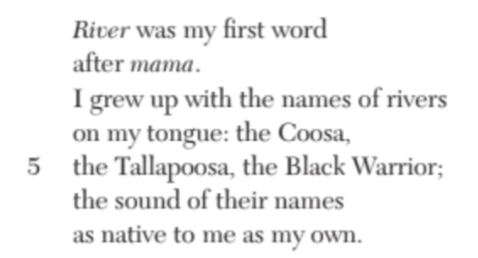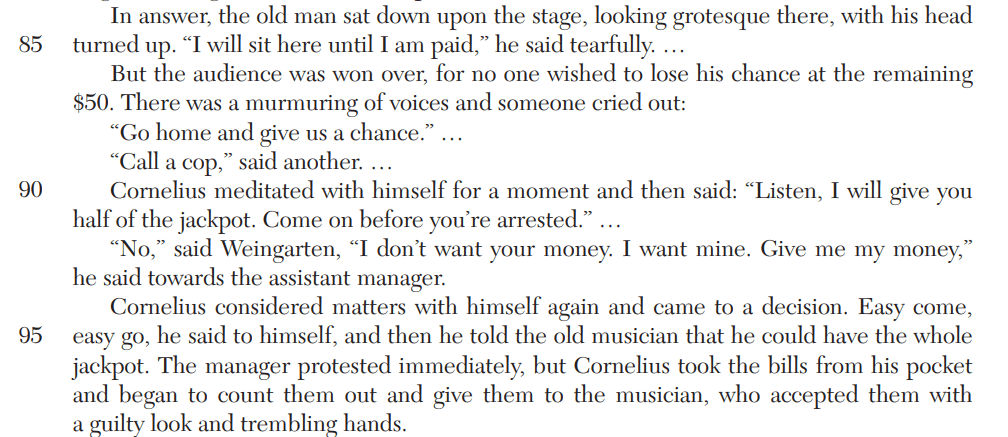Who is the narrator of a story?
The person telling the story. The narrator is different from the author.
What is the definition of characterization?
the way the author reveals a character's traits and personality.
What are context clues?
Hints found within a text that a reader can use to understand the meanings of new or unfamiliar word
When you look through each multiple choice answer, what strategy is that called?
process of elimination.
What is the definition of a central idea?
What a text is mostly about.
Ms. Bouret is reluctant to watch scary movies. What does reluctant mean?
unwillingness or disinclination to do something
What does foreshadowing mean?
a literary device that is used to give a hint of what will happen later in the story.
What are the two types of characterization?
Indirect characterization- You have to analyze the text to figure out the character’s personality/traits.
Direct characterization- the author tells you the character’s traits/personality.
Where can you find context clues?
You can find context clues in the sentence with the word, the sentence before, and the sentence after.
If a question gives you a paragraph, quote or line to refer to, what should you do to answer the question?
Go back into the text.
What 3 places in a text can help you find the central idea?
The title
Key details
The first paragraph
The last paragraph
Saying it's raining during a hurricane is an understatement. What does understatement mean?
the presentation of something as being smaller, worse, or less important than it actually is
What is figuartive langugue? Provide at least one example of figurative language.
a literary device that is used to give a hint of what will happen later in the story.
Examples: simile, metaphors, irony, hyperbole, juxtaposition, symbolism, alliteration, allusion,
What are the four methods of characterization?
1. What does the character look like?
2. What is his or her personality like?
3. What does the character think, say, and do?
4. What do other characters say about this character? How do they act around him or her?
What are the 5 different types of context clues?
inference, definition, example, antonym and synonym
When you have a passage with multiple choice questions, what should you do first?
You should read the question first then annotate the question.

B
Xiomara always comes back from the weekend with an anecdote about her life. What does anecdote mean?
a short amusing or interesting story about a real incident or person.
What is the definition of setting, and how does it impact a story?
Setting is the place, time, and culture of a story.
Setting impacts the story by influencing the conflict, characters, and events.
What does the phrase “ collect his thoughts” tell the reader about Ohkwa’ri in paragraph 1?
A.he is memorizing a speech
b.He is expecting an argument
C.he is hesitant to express disagreement
D.he is preparing to say something important.

D.
As used in line 7, the word “native” most nearly
means
(1) dull (3) unusual
(2) simple (4) familiar

4
What should you do when you find a question too difficult?
What should you do when you finish the test?
Skip the question and come back to it later.
When you finish the test, you should review all your answers to ensure you answered everything.
Lines 56 through 59 contribute to a central idea
by revealing the
(1) theater’s ignorance about finances
(2) employee’s disgust with management
(3) theater’s dishonesty with the public
(4) employee’s embarrassment about the game

3
Tony has a strong inclination toward the arts, especially because his mother is an artist. What does inclination mean?
a person's natural tendency or urge to act or feel in a particular way
What is the definition of conflict? What are the four types of conflict?
Conflict is the problem in the story
Types of conflict:
External conflict:
Character versus character
Character versus nature
Character versus society
Internal conflict:
Character versus self
9 The description in lines 120 through 122
communicates that Knight
(1) recognizes that Boyne’s claims were true
(2) feels deceived by the actions of Boyne
(3) has regrets that he did not keep the almanac
(4) is relieved that he did not read the almanac

1

As used in the poem, the word “idyllic” (line 10)
most nearly means
(1) charmingly beautiful
(2) shrouded in mystery
(3) full of surprises
(4) unexpectedly simple
1
What does chunking the text mean?
Break up the text by annotating

In the context of the passage as a whole, lines 86
through 96 suggest a central idea that
(1) society emphasizes respect for the elderly
(2) cash prizes reveal a person’s true character
(3) good deeds bring about good luck
(4) money ensures success in business
2
What does monotonous mean?
dull, tedious, and repetitious; lacking in variety and interest